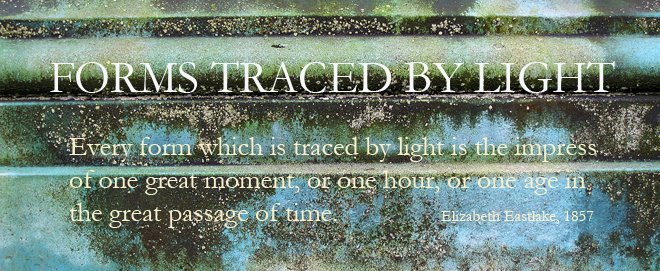 This is a mullein plant at the end of our driveway, looking pretty good in the early morning when I went to pick up the paper, shining slightly with drops from an overnight rainstorm. One can do all kinds of things with mullein leaves (though I think quite what depends on what variety) - brew them up and use them as a remedy for asthma, or sore throats, or ear infections. Some Indians make a paralytic fish poison from the seeds, but the medicinal properties play more into my fantasies of being a curandera when I retire - among other things - specializing in medicines and potions made from native plants. I've long, long been fascinated (let's go back at least to when I was eight or nine, but didn't have a whole lot to play with other than mint and rosemary in the garden) with herbs and what one can do with them - I used, then, to want to make a facsimile medieval herb garden, with the herbies all laid out in mandala shapes or mazes (this is still there as a fantasy ... next summer, maybe I'll get going with all the requisite bits of string). And maybe a couple of these tall mulleins should stand at the center of the maze?
This is a mullein plant at the end of our driveway, looking pretty good in the early morning when I went to pick up the paper, shining slightly with drops from an overnight rainstorm. One can do all kinds of things with mullein leaves (though I think quite what depends on what variety) - brew them up and use them as a remedy for asthma, or sore throats, or ear infections. Some Indians make a paralytic fish poison from the seeds, but the medicinal properties play more into my fantasies of being a curandera when I retire - among other things - specializing in medicines and potions made from native plants. I've long, long been fascinated (let's go back at least to when I was eight or nine, but didn't have a whole lot to play with other than mint and rosemary in the garden) with herbs and what one can do with them - I used, then, to want to make a facsimile medieval herb garden, with the herbies all laid out in mandala shapes or mazes (this is still there as a fantasy ... next summer, maybe I'll get going with all the requisite bits of string). And maybe a couple of these tall mulleins should stand at the center of the maze?
Tuesday, August 17, 2010
Mullein
 This is a mullein plant at the end of our driveway, looking pretty good in the early morning when I went to pick up the paper, shining slightly with drops from an overnight rainstorm. One can do all kinds of things with mullein leaves (though I think quite what depends on what variety) - brew them up and use them as a remedy for asthma, or sore throats, or ear infections. Some Indians make a paralytic fish poison from the seeds, but the medicinal properties play more into my fantasies of being a curandera when I retire - among other things - specializing in medicines and potions made from native plants. I've long, long been fascinated (let's go back at least to when I was eight or nine, but didn't have a whole lot to play with other than mint and rosemary in the garden) with herbs and what one can do with them - I used, then, to want to make a facsimile medieval herb garden, with the herbies all laid out in mandala shapes or mazes (this is still there as a fantasy ... next summer, maybe I'll get going with all the requisite bits of string). And maybe a couple of these tall mulleins should stand at the center of the maze?
This is a mullein plant at the end of our driveway, looking pretty good in the early morning when I went to pick up the paper, shining slightly with drops from an overnight rainstorm. One can do all kinds of things with mullein leaves (though I think quite what depends on what variety) - brew them up and use them as a remedy for asthma, or sore throats, or ear infections. Some Indians make a paralytic fish poison from the seeds, but the medicinal properties play more into my fantasies of being a curandera when I retire - among other things - specializing in medicines and potions made from native plants. I've long, long been fascinated (let's go back at least to when I was eight or nine, but didn't have a whole lot to play with other than mint and rosemary in the garden) with herbs and what one can do with them - I used, then, to want to make a facsimile medieval herb garden, with the herbies all laid out in mandala shapes or mazes (this is still there as a fantasy ... next summer, maybe I'll get going with all the requisite bits of string). And maybe a couple of these tall mulleins should stand at the center of the maze?
Subscribe to:
Post Comments (Atom)


No comments:
Post a Comment